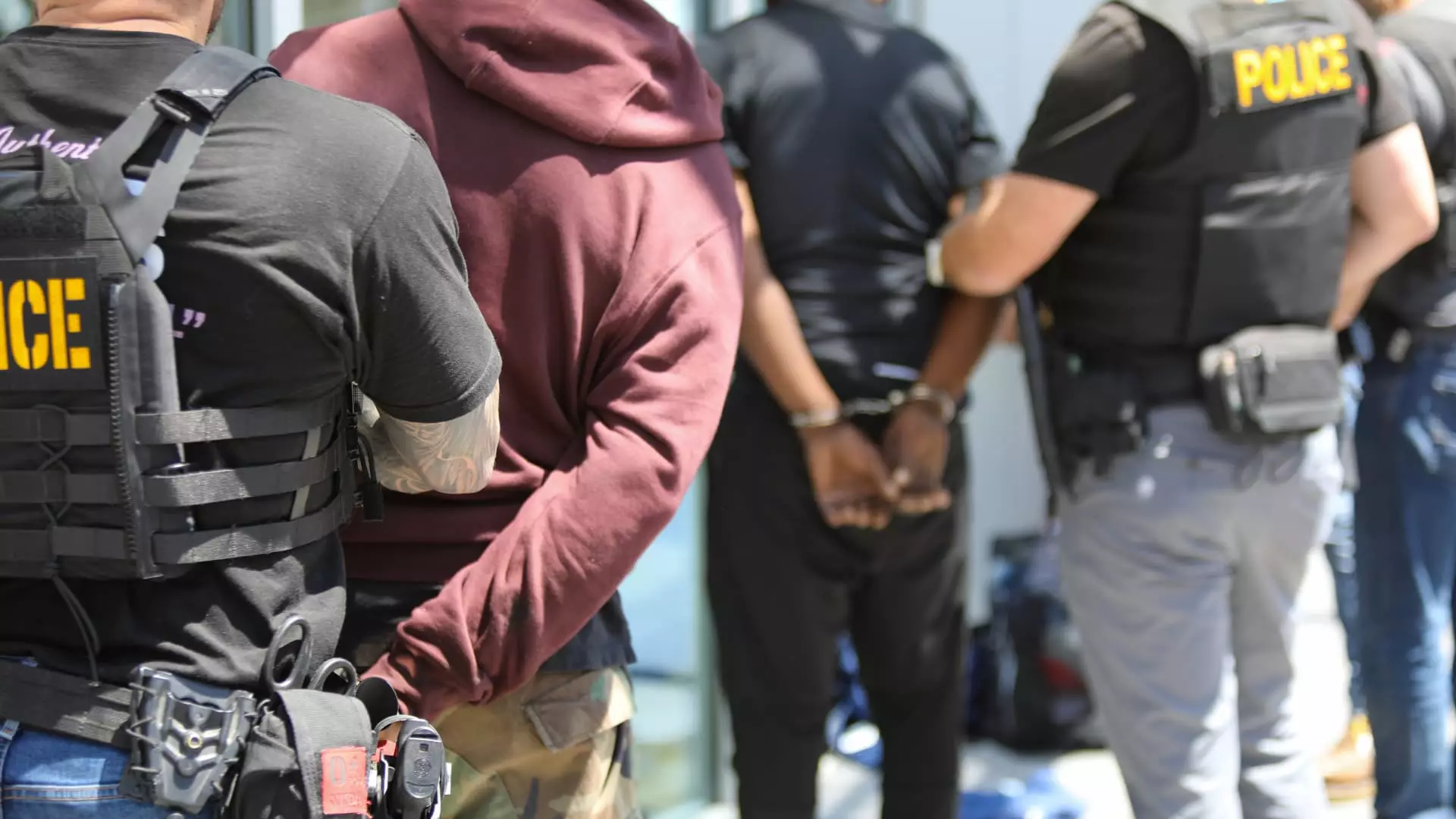In recent years, retail crime has reached an alarming crescendo, evolving from sporadic shoplifting incidents to organized theft rings that operate with chilling efficiency. The vast scale of this problem cannot be overstated—statistics reveal a staggering 93% increase in reported shoplifting incidents since 2019, with associated losses climbing a shocking 90%. This rampant rise serves not just as a backdrop for the criminal world but also as a litmus test for our societal values and law enforcement capabilities. We are now witnessing a profound struggle that calls into question our definitions of justice and the efficacy of existing laws aimed at curbing such illicit activities.
A Nationwide Response: Coordination and Collaboration
Last week, a coordinated effort across 28 states unveiled what has been heralded as a landmark collaboration among law enforcement agencies and retailers. Spearheaded by Illinois’ Cook County regional organized crime task force, the operation led to hundreds of arrests spanning more than 100 jurisdictions. While the ambition behind this operation is commendable, one must critically assess its long-term implications. Are these targeted strikes a mere band-aid on a festering wound, or do they represent a meaningful shift toward a more proactive approach to crime prevention?
Cook County Sheriff Tom Dart’s assertion that focused attention on crime will yield lower crime rates signifies a hopeful yet simplified view. Retailers like Ulta Beauty and Walgreens, recognizing organized retail crime as a significant challenge, participated in the operation, necessitating collaboration among various stakeholders. However, just like ship-owners investing in technology to build stronger vessels, these retailers must also rethink their internal strategies to fortify their defenses against this sophisticated enemy.
The Role of Legislation and Prosecution
One of the critical changes initiated by Cook County State’s Attorney Eileen O’Neill Burke focuses on the felony thresholds for retail theft. Under Burke’s leadership, the bar for felony prosecution has been lowered to allow charges when the stolen goods exceed $300, as opposed to the former $1,000 threshold. On the surface, this legislative adjustment could be seen as a courageous step toward accountability and stronger deterrence. However, we must ponder whether these legal reforms are substantive enough or merely a reactive measure to public outcry.
Effective change should strive for a balance between punishment for offenders and addressing the socio-economic factors contributing to such crimes. Simplistically viewing this issue through the lens of punishment fails to acknowledge the systemic issues at play within the communities from which these criminal elements arise. Criminalization alone will not disrupt this cycle; rather, it may exacerbate the issues prevalent in poorer neighborhoods where desperation often leads idle hands toward theft.
Long-term Strategies for Retailers and Law Enforcement
The question remains: can law enforcement and retailers sustain this momentum in combating retail crime? Collaboration has indeed proven valuable, as evidenced by the flow of intelligence between retailers and police during this nationwide operation. Yet, it is crucial that this spirit of cooperation expands beyond occasional blitzes. Retailers must invest in comprehensive training for their employees, reinforcing the influence of community relations in enhancing both security and social responsibility.
Moreover, understanding the network of organized crime operations calls for an innovative application of technology and data analytics to map patterns of theft. While retailers are initiating conversations around these strategies, it’s essential that they take actionable steps to integrate them into everyday operations. As we veer further into a digital age, a tech-savvy approach with predictive analytics can provide a competitive edge in the daunting battle against retail crime.
Beyond Arrests: The Need for Holistic Solutions
The aspirations set forth by initiatives like the recent organized retail crime operation cannot be restricted to reactive measures alone. The nervousness of stakeholders is palpable; they are navigating a world where each theft leads to significant ramifications—escalating prices for consumers, store closures, and ultimately, the loss of untold jobs. The urgency now rests on our collective shoulders—to ponder whether this crackdown is merely a performance or a precursor to long-term, sustainable change.
Adopting an expansive viewpoint, we must refocus our discussions around retail theft from simply numerical data and arrest totals to a broader dialogue that includes education, economic opportunities, and community engagement. These elements are integral to dismantling the criminal networks and debilitating their allure for desperate individuals.
In the fight against organized retail crime, the assessment is clear: creating a meaningful impact requires more than just numbers and arrests; it demands a comprehensive societal effort to understand and address the roots of crime itself.

